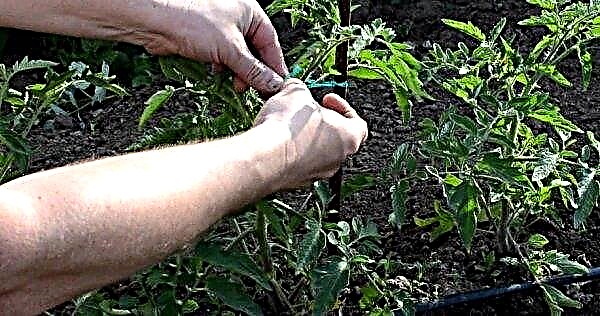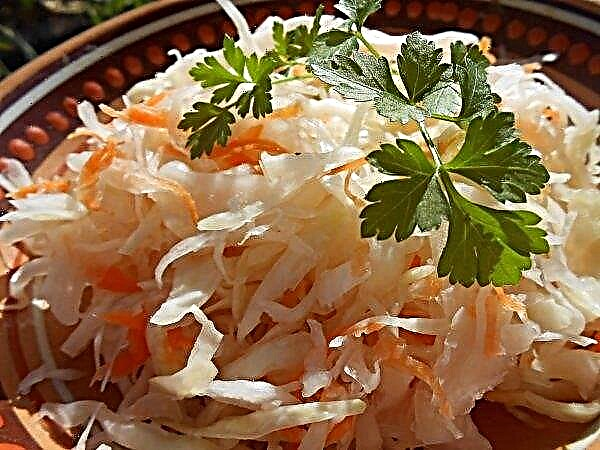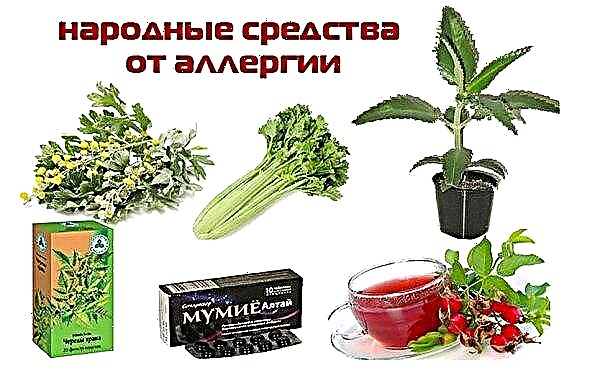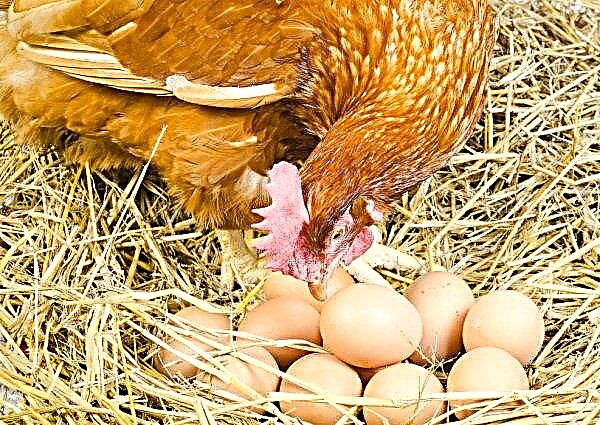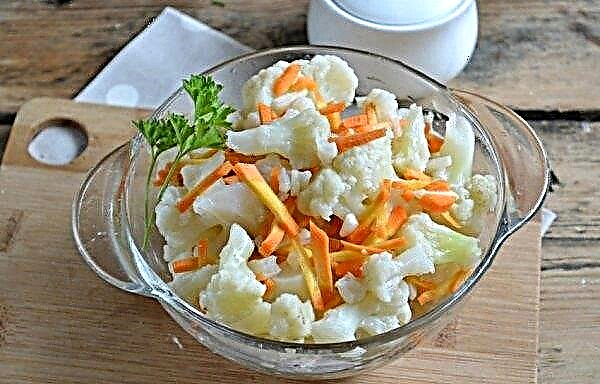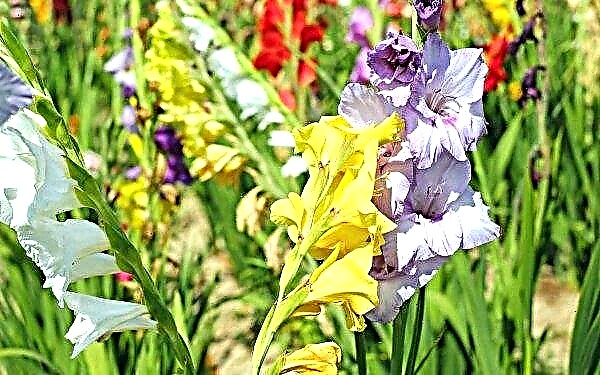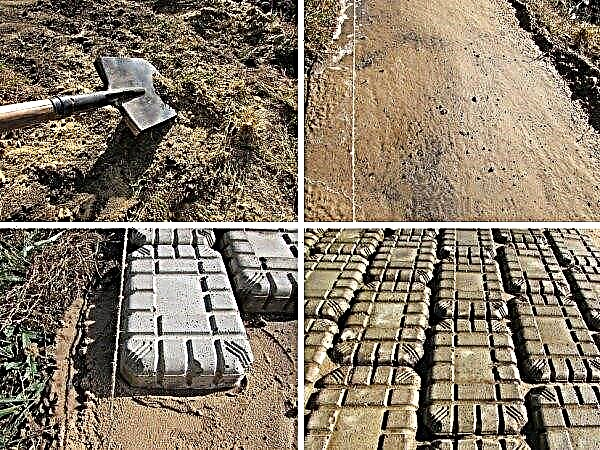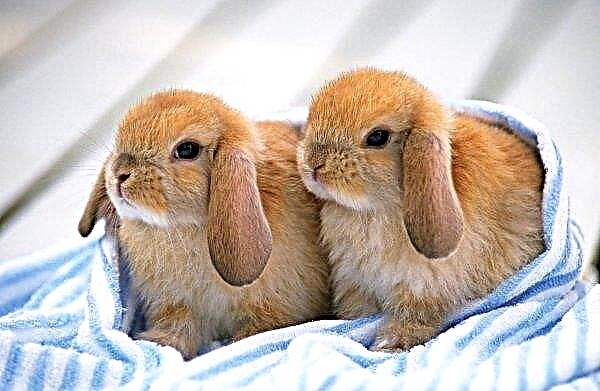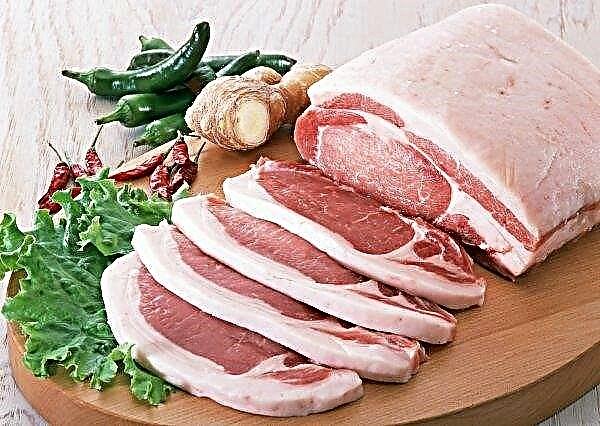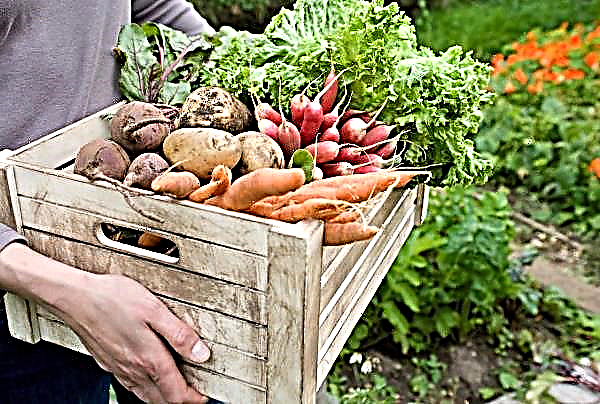Corn is a favorite delicacy and the basis of the diet of many farm birds, however, the possibility of its inclusion in the diet of rabbits for beginning farmers is often in doubt.
Can rabbits be given corn
According to the generally accepted point of view, corn is excellent for the digestive system of rabbits of all breeds, including ornamental. As food, you can use not only grains, but also the green parts of the plant - leaves, stems and tops, all these fur-bearing animals of the hare family eat with great pleasure.
Did you know? For many people, the question of classifying corn causes difficulties: some consider it to be a cereal crop, others consider it to be a legume, and still others consider it a vegetable in general. In fact, if we talk about the botanical structure of the plant, corn should definitely be attributed to cereals.
Beneficial features
Corn (or maize) is a real storehouse of nutrients necessary for the growth and development of the rabbit.
- The advantages of this type of feed include:
- high energy value (approximately 44 kcal per 100 g of grains), represented primarily by complex carbohydrates (starch, dietary fiber) and simple (fructose, sucrose and glucose);
- rich vitamin composition (various parts of the plant contain retinol, beta-carotene, tocopherol, thiamine, riboflavin, pantothenic, nicotinic and folic acids, pyridoxine, cobalamin, biotin and choline);
- the presence of important minerals (potassium, calcium, magnesium, silicon, sodium, phosphorus, sulfur, chlorine, and also in smaller amounts zinc, iodine, selenium, chromium, fluorine, nickel, molybdenum, cobalt, manganese, iron, boron, copper, vanadium and even gold );
- the presence of polyunsaturated fatty acids in the product (linoleic and linolenic);
- a wide range of essential and essential amino acids in the product (among the former it is worth mentioning aspartic and glutamic acids, alanine, glycine, proline, serine, tyrosine and cysteine, the second medium - arginine, valine, histidine, isoleucine, leucine, lysine, methionine, theonine, tryptophan and phenylalanine);
- high fiber content in the fruits of the plant, which is necessary for rabbits to maintain intestinal tone;
- the ability of the gastrointestinal tract of the rabbit to easily digest the product and absorb the nutrients contained in it;
- beneficial effect of hard grains on the teeth of the animal in need of constant grinding (the presence of corn in feeds can even save the farmer from the need to search for and lay in the cells twigs and bark of fruit and other trees).
 A properly balanced complex of biologically active substances contained in corn contributes not only to the weight gain of rabbits, the normal functioning of their intestines and tooth processing, but also to the improvement of the quality of the fur, which, as you know, is one of the main goals of breeding these fur animals.
A properly balanced complex of biologically active substances contained in corn contributes not only to the weight gain of rabbits, the normal functioning of their intestines and tooth processing, but also to the improvement of the quality of the fur, which, as you know, is one of the main goals of breeding these fur animals.Did you know? In the 50s of the last century, the real "corn mania" unfolded in the Soviet Union. Fulfilling the directives of the then Secretary General of the CPSU Central Committee, Nikita Khrushchev, who was impressed by the trip to the US state of Iowa, where corn was used to feed cows, and decided to “catch up with and overtake America,” this cereal was planted literally everywhere, except in permafrost regions. So, for example, in Western Siberia, the area sown for corn was increased by more than seven hundred times. However, ignorance of agricultural technology and ignoring the natural conditions necessary for cultivating the crop led to the fact that it was not possible to collect high yields, and “corn” livestock feed cost three times more than the cost of ordinary meadow grass.
Harm
However, no matter how useful corn is for rabbits, it cannot be used as the main feed.
- Among the disadvantages of the product, requiring its mandatory combination with other types of feed (cereals and legumes), it is necessary to name:
- too high calorie content (emphasis on corn in feeding rabbits can cause obesity in animals, since the product has a lot of sugar, starch and fat);
- insufficiently high calcium content in the plant;
- protein in corn grains is also less than what a rabbit needs for a balanced diet;
- the ability to cause intestinal disorders and an allergic reaction (manifested mainly in young animals, especially when the product is not introduced into the diet gradually, but immediately in large volumes).

Since it is ornamental rabbits that are usually distinguished by a particularly weak digestive system, in civilized countries these animals are recommended to be fed their natural food, completely eliminating cereals, including corn, from their digestion, which are not characteristic of their digestion.
However, if a loving owner can choose this kind of food for a pet, then in industrial rabbit breeding it is almost impossible to completely get rid of inexpensive and easy-to-use feeds, moreover, they really contribute to the rapid gain in live weight by livestock, which, even to the detriment of the individual’s health , and is the ultimate goal of the herder.
Important! Sad statistics from European veterinarians: seven out of ten decorative rabbits that were fed dry food had an obese liver at autopsy.
In what form is it better to give corn
There are many ways to feed rabbits corn. Their choice depends on the season and the geographical location of the economy, as well as on whether the plant is grown on its own site, when you can be sure of its quality, or purchased in a distribution network.
So, for example, as a wonderful vitamin supplement for animals, you can use green seedlings of maize, gaining about ten centimeters in height (at this time, the beds are still usually thin out).
Further, when young cobs appear, they can be sent to the rabbitry directly from the beds, raw, whole, and without even clearing them of the leaves covering the weevil. Such food will allow animals to gain weight very well in the autumn period, that is, just before slaughtering the rabbits for meat. A more common way to use fresh corn as a feed is pre-treatment. Ears are cleaned of leaves, washed under running water and dried well in the sun.
A more common way to use fresh corn as a feed is pre-treatment. Ears are cleaned of leaves, washed under running water and dried well in the sun.
After that, the animals are given in whole or chopped into several parts, however, in the latter case, grinding should be carried out immediately before feeding, in order to prevent spoilage of the product. The leaves are also washed, dried, crushed and given separately from the grains.
Sweet corn has one unpleasant feature. Its simple carbohydrates transform very quickly into cellulose, and as a result, tender cobs become literally wooden. If this happens, solid grains are recommended to first be soaked in water overnight and only then given to rabbits.Important! After washing, it is recommended that you flush cobs with boiling water to destroy the pathogenic microflora that could accumulate in them during harvesting and transportation.
If white (young) corn is best given to animals in raw form, then old ears can be boiled just until cooked or until porridge. Also, boiled plants are usually used plants grown in ecologically questionable regions.
Of course, not all harmful substances contained in air and in the ground near roads and industrial zones are destroyed as a result of heat treatment, and therefore it is advisable not to use such a “crop” as feed, but the reality is that real organic farming is far from accessible everyone, and such products are too expensive. You should also know that corn is part of almost all ready-made feed for rabbits - both in the form of grain mixtures and in granular (pressed) form. This cereal usually accounts for at least one fourth of the composition of such feed, although in some brands its percentage reaches half and even three quarters.
You should also know that corn is part of almost all ready-made feed for rabbits - both in the form of grain mixtures and in granular (pressed) form. This cereal usually accounts for at least one fourth of the composition of such feed, although in some brands its percentage reaches half and even three quarters.
Important! The rabbit’s digestive system is too weak to process cereals, so initially only the green parts of maize — leaves and shoots — can be added to the young’s feed. Grains, even boiled in the form of porridge, are strictly contraindicated for rabbits.
How to feed rabbits corn
So, the question of whether rabbits are fed corn, in modern livestock breeding, as a rule, is solved positively. This cereal is included in the nutrition of animals from a young age, however, for different stages of development, its use has its own characteristics.
Young growth
If the first one and a half to two months of life, rabbits should receive exclusively mother's milk, then, starting from the seventh week of life, their diet begins to gradually diversify.
But even in this form, corn should be given to rabbits dosed and in small quantities, it is better to do this no more than once or twice a week.
Corn cobs are introduced into the diet of young animals gradually, it is better to postpone such complementary foods at least until the rabbits reach four months of age, when the animals are gradually transferred to the usual feeding scheme for adults. You also need to know that it is maize that causes such negative reactions in young rabbits as:
You also need to know that it is maize that causes such negative reactions in young rabbits as:
- intestinal disorders;
- a change in the consistency of feces;
- vomiting
- various forms of allergies;
- changes in behavior - lethargy, lack of activity, apathy.
Did you know? The thickest rabbit in the world lives in the English city of Worcester. The mammal weighs a quarter centner and is comparable in size to a six-year-old child. For a year, this monster destroys about four tons of carrots, and in general, keeping a pet costs its owners more than three thousand pounds.
Adults
In the nutrition of adult rabbits, corn takes priority during the preparation of the herd for slaughter. So, to quickly gain live weight one and a half to two months before the expected slaughter, corn grains in the amount of 60 to 150 g per head daily are introduced into the herd diet, and as the “control date” approaches, this dose gradually increases from the lower limit of the specified range to to the top. The rest of the time, in order to avoid the development of obesity and other pathologies, the proportion of maize in the diet of rabbits should not exceed 10-15% of the total amount of food.
The rest of the time, in order to avoid the development of obesity and other pathologies, the proportion of maize in the diet of rabbits should not exceed 10-15% of the total amount of food.
Puppet rabbits
If an increased amount of high-calorie cereal should not be present in the diet of adult rabbits, then an exception is made for rabbits during pregnancy. It is thanks to the high nutritional value of corn that it is possible to achieve faster formation of embryos and, accordingly, the birth of large and healthy rabbits.
Therefore, maize grains in an increased amount are given to rabbit (pregnant) rabbits starting from the fourth week of pregnancy (it is during this period that the internal organs of the embryos are already practically formed and intensive growth of the fetus begins).
Important! During the mating season, experienced farmers, on the contrary, try to completely exclude corn from the nutrition of rabbits - both females and males. From such food, animals become lethargic, lazy and lethargic, which impedes their reproductive function. This fact, by the way, once again confirms that maize is not “healthy food” for rabbits, as is customary to say.
However, in order not to harm the mother’s body, the total volume of all cereals in her diet should not exceed 100–150 g per day (that is, in fact, we are talking about the same parameters as when feeding rabbits for slaughter) and it is also necessary to increase the share of greens and vegetables - a source of vitamins and other nutrients in the form familiar to the rabbit's body. After the rounding, corn is kept for some time in the diet of the rabbit in the same amount in order to increase the fat content and nutritional properties of milk and accelerate the growth of rabbits. But, starting from the eighth day, the proportion of this cereal must be gradually reduced: the kids by this moment should already be strong enough, and it is very important for the nursing mother to be protected from obesity.
After the rounding, corn is kept for some time in the diet of the rabbit in the same amount in order to increase the fat content and nutritional properties of milk and accelerate the growth of rabbits. But, starting from the eighth day, the proportion of this cereal must be gradually reduced: the kids by this moment should already be strong enough, and it is very important for the nursing mother to be protected from obesity.
Important! Unlike “pure” corn, silage, prepared with a small amount of tops of this plant, is really a very valuable and nutritious product that can fill the rabbits' need for vitamins during the cold season.
How to harvest corn for the winter
The easiest way to prepare for long-term storage is the green parts of maize. Leaves and stems are simply washed and dried in a shaded place (if desired, the tops can be chopped beforehand).
Another form of harvesting corn tops is silage (for this purpose you can also use whole cobs). Maize is mixed with other types of plant feed (vegetables, root crops, melons), the resulting mass is crushed and fermented under pressure in special containers. As for corn grains, they are difficult to long-term storage. However, you can try chopping the cobs into several parts and harvesting by deep freezing.
As for corn grains, they are difficult to long-term storage. However, you can try chopping the cobs into several parts and harvesting by deep freezing.
Corn is widely used in feeding rabbits, but such a product for these animals is not absolutely safe. From an economic point of view, a step can only be considered as the inclusion of high-calorie, sweet and fatty cereals in the diet of rabbits preparing for slaughter, as well as the addition of rabbit rabbits and females as food for the first days after the rounding.
Corn, like other cereals, is capable of causing obesity in animals of the hare family, therefore, caution should also be exercised in the use of dry feed and granules in their diet, in which this plant, as the most affordable and inexpensive, occupies a significant part.

